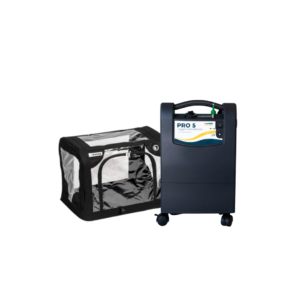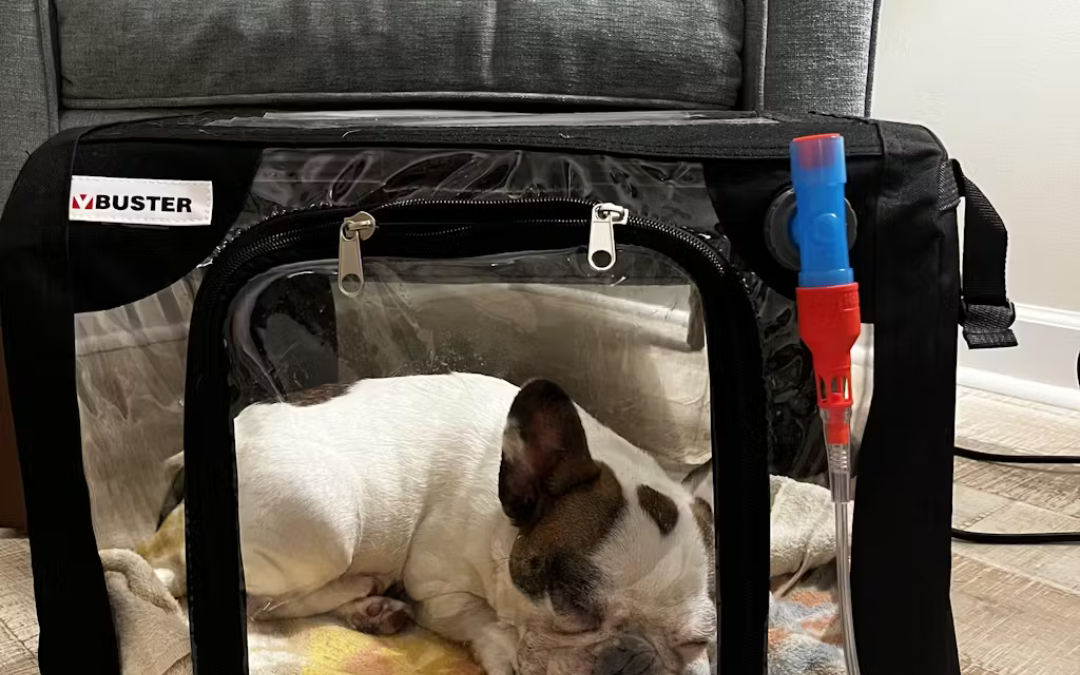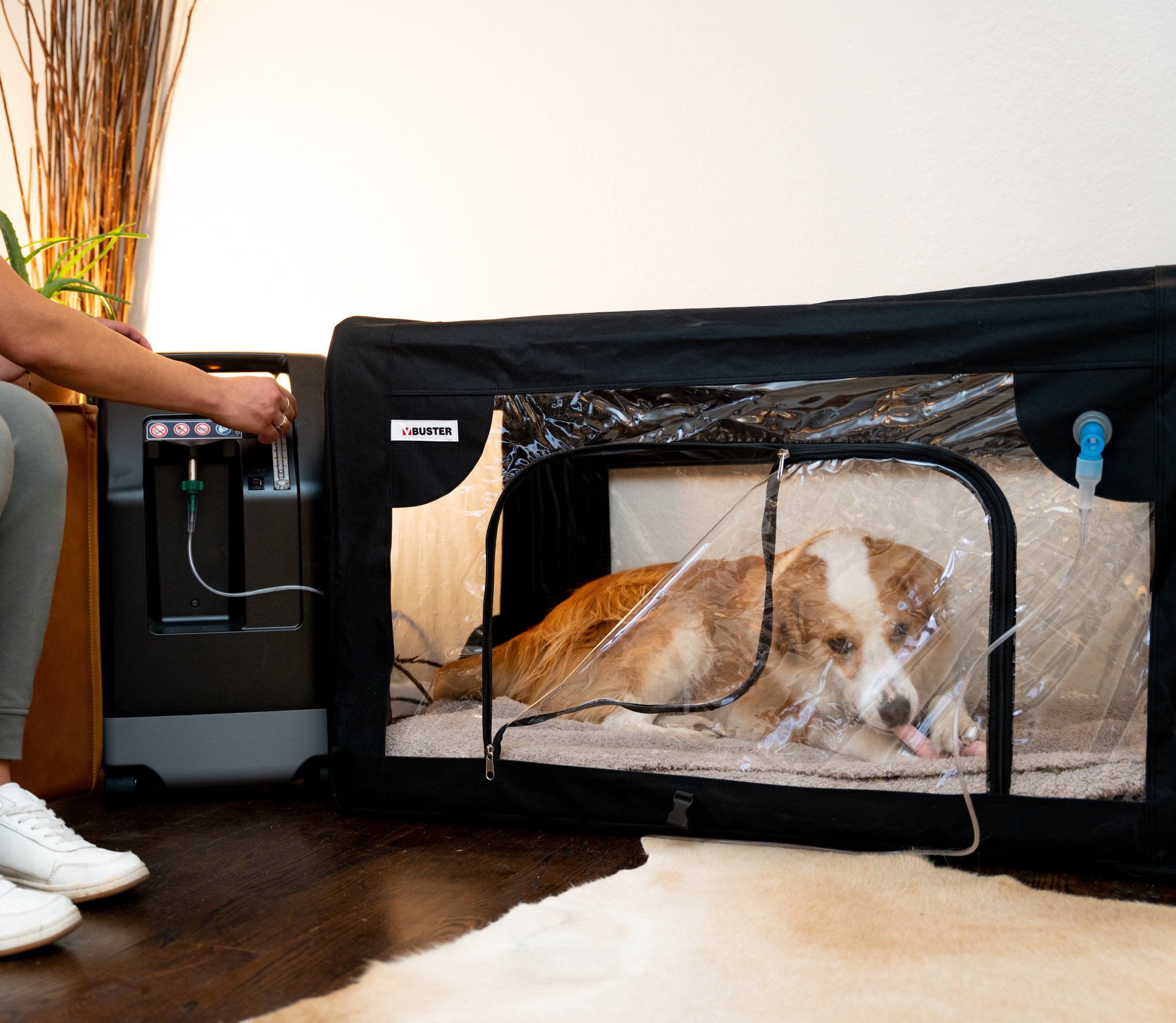Are you worried about your brachycephalic dog’s breathing problems? If so, you’re in the right place! In this article, we will explore the challenges faced by brachycephalic breeds, such as Bulldogs, Pugs, and Boston Terriers, when it comes to their respiratory health.
Brachycephalic dogs have unique facial structures characterized by shortened noses and pushed-in faces. While this makes them adorable, it also poses several health risks, particularly concerning their ability to breathe properly. These breeds often suffer from Brachycephalic Obstructive Airway Syndrome (BOAS), a condition that can range from mild to severe and significantly impact their quality of life.
Our team of experts will discuss various strategies to help alleviate breathing problems in brachycephalic dogs, including the innovative use of supplementary oxygen resources like PawPrint Oxygen’s pet oxygen equipment, designed specifically for pets. From lifestyle modifications to surgical interventions, we will cover everything you need to know to improve your furry friend’s respiratory health. So, if you want to understand how you can support your brachycephalic dog’s breathing and ensure they lead a happy and fulfilling life, keep reading!
Remember, your dog’s well-being is our top priority, and we’re here to guide you every step of the way.
Understanding Brachycephalic Dogs and Their Breathing Problems
Brachycephalic dogs, such as Bulldogs, Pugs, and Boston Terriers, are beloved for their adorable appearance and affectionate nature. However, their unique facial anatomy can lead to breathing difficulties. These breeds have shortened noses, elongated soft palates, narrow nostrils, and sometimes even collapsed tracheas. These structural abnormalities make it harder for them to breathe freely, resulting in various breathing problems.
Brachycephalic Obstructive Airway Syndrome (BOAS) is a common condition among these breeds. It occurs due to the combination of their facial structure and respiratory tract abnormalities. Dogs with BOAS often struggle with limited airway capacity, leading to reduced oxygen intake and increased effort during breathing. This can result in symptoms such as noisy breathing, snorting, snoring, and even episodes of fainting or collapse.
Brachycephalic dog owners need to understand the specific challenges their pets face when it comes to breathing. By gaining this knowledge, you’ll be better equipped to identify and address any potential issues. In the following sections, we will delve deeper into the causes, signs, and management of breathing problems in brachycephalic dogs.
Supplementary Oxygen: A Vital Resource for Managing Breathing Difficulties
For brachycephalic dogs facing severe breathing challenges, supplementary oxygen can be a lifesaver. PawPrint Oxygen offers a range of pet oxygen equipment that is easy to use, portable, and specifically designed for pets. This equipment can provide immediate relief for dogs struggling to breathe, especially during severe episodes of BOAS or in hot and humid conditions that exacerbate their condition.
Using PawPrint Oxygen’s products, pet owners can ensure their dogs receive the necessary oxygenation to support their respiratory function until veterinary care can be provided or as a part of ongoing management of chronic respiratory conditions. It’s an invaluable tool in the arsenal against breathing problems in brachycephalic dogs, offering peace of mind to pet owners and improving the quality of life for their beloved pets.

Common Breathing Problems in Brachycephalic Dogs
Breathing problems in brachycephalic dogs can manifest in various ways, ranging from mild to severe. Some common respiratory issues experienced by these breeds include:
1. Stenotic Nares: Narrow nostrils are a major contributing factor to breathing difficulties in brachycephalic dogs. The restricted airflow through the nostrils can make it challenging for them to breathe adequately. This can lead to snorting, snoring, and loud breathing sounds.
2. Elongated Soft Palate: The soft palate is the tissue at the back of the throat. In brachycephalic dogs, it can be elongated and obstruct the airway, causing breathing problems. This can result in noisy breathing, gagging, and even choking.
3. Everted Laryngeal Saccules: The laryngeal saccules are small pouches of tissue located in the larynx. In brachycephalic dogs, these saccules can become everted, further obstructing the airway. This can lead to increased effort during breathing, coughing, and difficulty exercising.
4. Tracheal Collapse: In some cases, brachycephalic dogs may also experience tracheal collapse, where the windpipe collapses inward during breathing. This can cause coughing, wheezing, and difficulty breathing, especially during physical activity.
Recognizing the specific breathing problems your brachycephalic dog may be facing is crucial in determining the appropriate management and treatment options. In the next section, we will explore the underlying causes of these breathing problems.
Causes of Breathing Problems in Brachycephalic Dogs
Breathing problems in brachycephalic dogs are primarily caused by their unique facial anatomy. The shortened noses and pushed-in faces result in structural abnormalities that impede normal airflow. Some common causes of breathing problems in these dogs include:
1. Genetics: Brachycephalic breeds are genetically predisposed to have the facial structure that contributes to their breathing difficulties. These traits are often passed down from generation to generation.
2. Selective Breeding: Breeding practices that focus on exaggerated facial features, such as flatter faces and shorter muzzles, can exacerbate breathing problems in brachycephalic dogs. Breeders need to prioritize the health of the dogs rather than purely aesthetic traits.
3. Obesity: Excess weight can put additional strain on the respiratory system, making breathing even more challenging for brachycephalic dogs. Maintaining a healthy weight through proper diet and exercise is essential for their overall well-being.
4. Environmental Factors: Brachycephalic dogs are more susceptible to heat exhaustion and heatstroke due to their compromised ability to regulate body temperature. High temperatures and humidity can further worsen their breathing problems and pose serious health risks.
Understanding the causes of breathing problems in brachycephalic dogs is crucial in developing effective management strategies. In the next section, we will discuss how to recognize the signs and symptoms of these issues.
Recognizing the Signs and Symptoms of Breathing Problems
Brachycephalic dogs often exhibit certain signs and symptoms that indicate respiratory issues. By being aware of these red flags, you can take prompt action and seek appropriate veterinary care. Some common signs of breathing problems in brachycephalic dogs include:
1. Noisy Breathing: If your dog consistently makes loud breathing sounds, such as snorting, snoring, or wheezing, it could be a sign of a respiratory problem.
2. Excessive Panting: While panting is normal for dogs, excessive panting, especially at rest or during mild activity, can indicate breathing difficulties.
3. Gagging and Choking: Dogs with elongated soft palates may experience episodes of gagging or choking, particularly when eating or drinking.
4. Coughing: Persistent coughing, especially after physical activity or excitement, can be a sign of underlying respiratory issues in brachycephalic dogs.
5. Exercise Intolerance: If your dog struggles to keep up during exercise or becomes easily fatigued, it may be due to compromised breathing function.
6. Fainting or Collapse: In severe cases, brachycephalic dogs with breathing problems may experience fainting or collapse due to inadequate oxygen intake.
It’s important to note that these symptoms may vary in severity depending on the individual dog and the underlying cause of their breathing problems. If you notice any of these signs, it’s best to consult with a veterinarian who specializes in brachycephalic breeds. They can provide a proper diagnosis and recommend appropriate management strategies.
1. Oxygen Chamber
Our Oxygen Chambers are cost effective, mobile (not built into a wall) and durable. Pet Owners can set these up with ease in their own home and administer multiple times a day.
Managing Breathing Problems in Brachycephalic Dogs
In this section, while discussing the management of breathing problems, it’s pertinent to highlight how PawPrint Oxygen’s pet oxygen equipment can play a crucial role. For instance, during recovery from surgical interventions or in managing acute respiratory distress at home, PawPrint Oxygen provides a practical and effective means of ensuring your dog has access to the oxygen they need.
Oxygen Rescue Kits can be a life-saving tool for owners to have a brachycephalic dog at home. We’ve helped thousands of owners get a kit to their home, so they can effectively administer oxygen to their dog on the way to their veterinarian. These kits have saved countless lives in transport to care.
Surgical Options for Brachycephalic Dogs with Severe Breathing Problems
In cases where lifestyle modifications and conservative management techniques are insufficient, surgical interventions may be necessary. Some common surgical procedures for brachycephalic dogs with severe breathing problems include:
1. Nasal Surgery: This procedure aims to widen the nostrils, allowing for improved airflow. It can help alleviate symptoms associated with stenotic nares.
2. Soft Palate Resection: Dogs with elongated soft palates may benefit from a surgical procedure that shortens and repositions the soft palate, reducing airway obstruction.
3. Laryngeal Saccule Removal: For dogs with everted laryngeal saccules, surgical removal of these tissues can help improve the airway and reduce breathing difficulties.
It’s important to note that surgical interventions carry risks, and the decision to proceed should be made in consultation with a qualified veterinary surgeon. They will assess your dog’s circumstances and determine the most appropriate course of action.
Tips for Preventing Breathing Problems in Brachycephalic Dogs
While not all breathing problems in brachycephalic dogs can be prevented, there are steps you can take to minimize the risk and promote better respiratory health. Consider the following tips:
1. Choose a Healthy Brachycephalic Dog: When getting a brachycephalic dog, select a reputable breeder who prioritizes the health and well-being of their dogs. Ensure that the parents have been health tested and cleared of any breathing-related issues.
2. Maintain a Healthy Weight: Obesity can exacerbate breathing problems in brachycephalic dogs. Provide a balanced diet and regular exercise to help your dog maintain a healthy weight.
3. Avoid Overexertion and Heat: Brachycephalic dogs are more prone to heatstroke and heat exhaustion. Limit their exposure to high temperatures, provide plenty of water, and avoid excessive exercise during hot and humid weather.
4. Provide Adequate Rest and Sleep: Brachycephalic dogs may need more rest and sleep than other breeds due to their breathing difficulties. Ensure they have a comfortable and quiet environment for relaxation.
By implementing these preventive measures, you can help reduce the likelihood and severity of breathing problems in your brachycephalic dog.
By ensuring that at-home oxygen cages are available to pet owners, Pawprint Oxygen allows for a broader range of treatment options. Since our setup is easy to use and safe to administer, owners can give oxygen to their pets in the comfort of their homes. This not only saves pet owners a trip to the ER but saves both stress and money, as well.
The Pet Oxygen Shop
-
Sale!

Extended Oxygen Therapy Bundle for Pets, up to 25 lbs
$1,300.00 -
Sale!

Extended Oxygen Therapy Bundle for Large Pets, up to 70 lbs
$2,100.00 -
Sale!

Extended + Rescue Oxygen Therapy Bundle for Large Dogs
$2,300.00 -
Sale!

Extended + Rescue Oxygen Therapy Bundle for Cats
$1,500.00 -
Sale!

Extended + Rescue Oxygen Therapy Bundle for Small Dogs
$1,500.00 -
Sale!

Extended Oxygen Therapy Bundle for Pets, up to 10 lbs
$1,200.00



